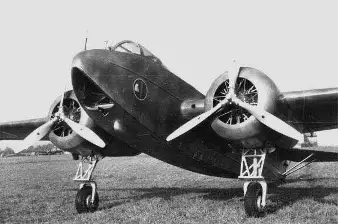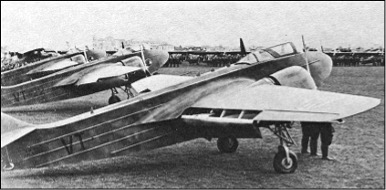In the early 1930s, the ideas of Colonel Antonio Mecozzi, theorizing the “Assault Aviation” were slowly gaining ground within the Regia Aeronautica (the Italian Aird force). Mecozzi’s ideas mainly resembled tactical bombing practices, that also other nations were experimenting in the 1930s.
The company Breda developed two monoplane bombers, the Ba. 64 and Ba.65, which however were not capable of performing diving attacks, like those of the German Stukas for instance. Another major Italian company, the SIAI-Marchetti developed a design for a two-engine monoplane, capable of diving. Named S.M. 85, the aircraft was entirely made of wood, could carry up to 800kg of bombs and had one 12,7mm machine gun. A prototype was built, and flew for the first time in December 1936, almost a year and a half later than the first flight of the Ju 87 Stuka.

After the first flight, new tests were carried out in 1937 but the performances of the S.M.85 were far from outstanding. The low performance of the aircraft led the SIAI-Marchetti to choose a new engine for the S.M. 85, the choice fell on the Piaggio P VII C35 (500 hp each).
However, the Regia Aeronautica placed an order for 48 aircraft. We can make the hypothesis that the Regia Aeronautica placed such order to allow the testing pilots (Reparto Sperimentale Volo a Tuffo) to train in dive-bombing and gain experience in this new speciality. In addition, there were no other aircraft developed for such a role so the S.M.85 was the only alternative.
In early March 1939, the first ten S.M.85 were ready and assigned to the Reparto Sperimentale Volo a Tuffo.
After further testing, the aircraft revealed several problems:
- It took too much time to gain altitude (14 minutes to get to 4.000 m),
- The dive often resulted in the pilot losing control of the aircraft.
- When the pilots tried to recall the aircraft from the dive, the S.M. 85 basically stalled in the air, becoming an easy target for AA fire. In addition,
- The pilots were forced to always release the bombs (even if no targets had been found) because, during the landing phase, the gears could bear the extra weight of the bombload.

The Reparto Sperimentale Volo a Tuffo was renamed 96th group and in early June 1940 flew from Rome to the island of Pantelleria (near Malta), in preparation for the imminent start of the hostilities against France and Great Britain. When landing on Pantelleria, one S.M.85, crashed, severely injuring the pilot, while the other two were also damaged. To add further problems, the hot climate on the Mediterranean island was detrimental for the wooden construction of the S.M.85, which tended to deform and deteriorate.
The only operational activities of the S.M.85 were two sorties (on the 30th June and 10th July) over the Mediterranean, in search of British ships which were never found. On the 16th of July, the remaining aeroplanes were withdrawn from frontline service, thus ending the short and unfortunate career of the only Italian-built dive bomber that saw service in WW2.
The SIAI-Marchetti tried to solve the problems of the S.M. 85 by re-designing and re-powering the aircraft. This resulted in the prototype of the S.M. 86, which mounted two more powerful engines but most of its predecessor could not be entirely solved.
In the meantime, the Regia Aeronautica had looked elsewhere, buying the first batch of Ju 87 from Germany, which re-equipped the 96th group.
| Model | SIAI-Marchetti S.M.85 |
|---|---|
| Crew | 1 |
| Powerplant | (2) Piaggio P.VII CR 35 500 HP Each |
| Maximum Speed | 229 mph (368 km/h) |
| Max Ceiling | 21,300 ft (6,500 m) |
| Range | 540 miles (870 km) |
| Length | 34.1 ft (10.4 m) |
| Height | 10.1 ft (3.3 m) |
| Weight | Empty: 6,504 lb (2,950 kg) Max: 9,237 lb (4,190 kg) |
| Wing Area | 278 Sq ft (25.8 m2) |
| Wingspan | 45.11 ft (14 m) |
| Armament | (1) 12.7 mm Breda SAFAT machine gun Bomb Load up to 1,764 lbs (800 kg) |
Sources
Lembo, D. (1999). I tuffatori della Regia. Aerei nella Storia , 30-38.
Marcon, T. (1999). I tuffatori della Regia Aeronautica. Storia Militare n.66, 16-33.
Sgarlato, N. (2000). La Regia Aeronautica nella II Guerra Mondiale. Delta Editrice.
